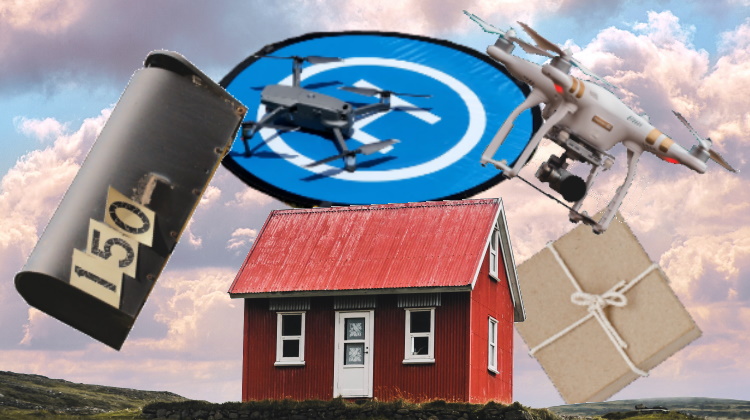
For hundreds of years, people have delivered mail in boxes or slots facing the street where letter carriers could side-load the mail. This has worked well for all these years because letter carriers have been delivering mail from the ground. But with drone technology, it is now possible to deliver mail from the air.
This is no longer science fiction. Back in 2016, Amazon Prime Air made its first delivery by drone. It’s conceivable that within the next few years, drone deliveries will be an option for many people around the world, especially in remote areas where ground delivery is difficult.
But the current postal infrastructure is ill-suited for supporting mail delivery from the air. Most mailboxes are loaded from the side, while most drones are best suited for dropping objects from above. For drone delivery to work, we either need to change the drone technology so it can easily side-load items, or we need to change our mailboxes so that mail can be dropped in from the top.
One solution is inspired by hospitals. Many hospitals have a helicopter landing pad on the roof for airlifting critical patients. What if we could place a drone delivery pad on the roof of every residence and business in the world? Doing this would be ideal because drones would have a clear flight path to each rooftop. In order to access a traditional ground-level mailbox, a drone would have to overcome many obstacles.
If every building had a drone delivery pad on its roof, every building would also have to have easy access to the pad for collecting deliveries. This can be accomplished by an elevator-type system where the mail could be brought down into the building. It would also be beneficial for each building to have a mailroom where all the mail would be lowered into and processed. Almost every building already has a few standard rooms like bathrooms, kitchens, and laundry rooms. The mailroom might be an addition for future buildings.
Retrofitting several billion buildings in the world with drone delivery pads may be unrealistic. Perhaps a better solution would be to start out with drone delivery hubs. Since Amazon has a head start in this field, I’ll use them as the example. Amazon owns Whole Foods Market, an American supermarket chain with over 500 locations across the United States. They could install a drone delivery pad on the roof of every Whole Foods store, then allow customers to have their goods delivered to their local Whole Foods for in-person pickup. Wouldn’t it be great if you could put in an Amazon.com order from your home in the morning, then have it ready for you to pick up when you stop by Whole Foods for lunch a couple hours later? Or you could be shopping at Whole Foods, discover that something is out of stock, then order it from your smartphone and have it delivered to the store by the time you’re done with your grocery shopping.
Looking farther into the future, if all mail were delivered by drones, we would no longer need ground deliveries (except for the heaviest items). Mailboxes and letter carriers would be obsolete. Certain essential items like stocks of toilet paper or bottles of water may be automatically monitored so they may be replenished automatically by drone when supplies get low.
It all sounds like some crazy science fiction movie, but we have the technology to make it a reality now.
Leave a Reply